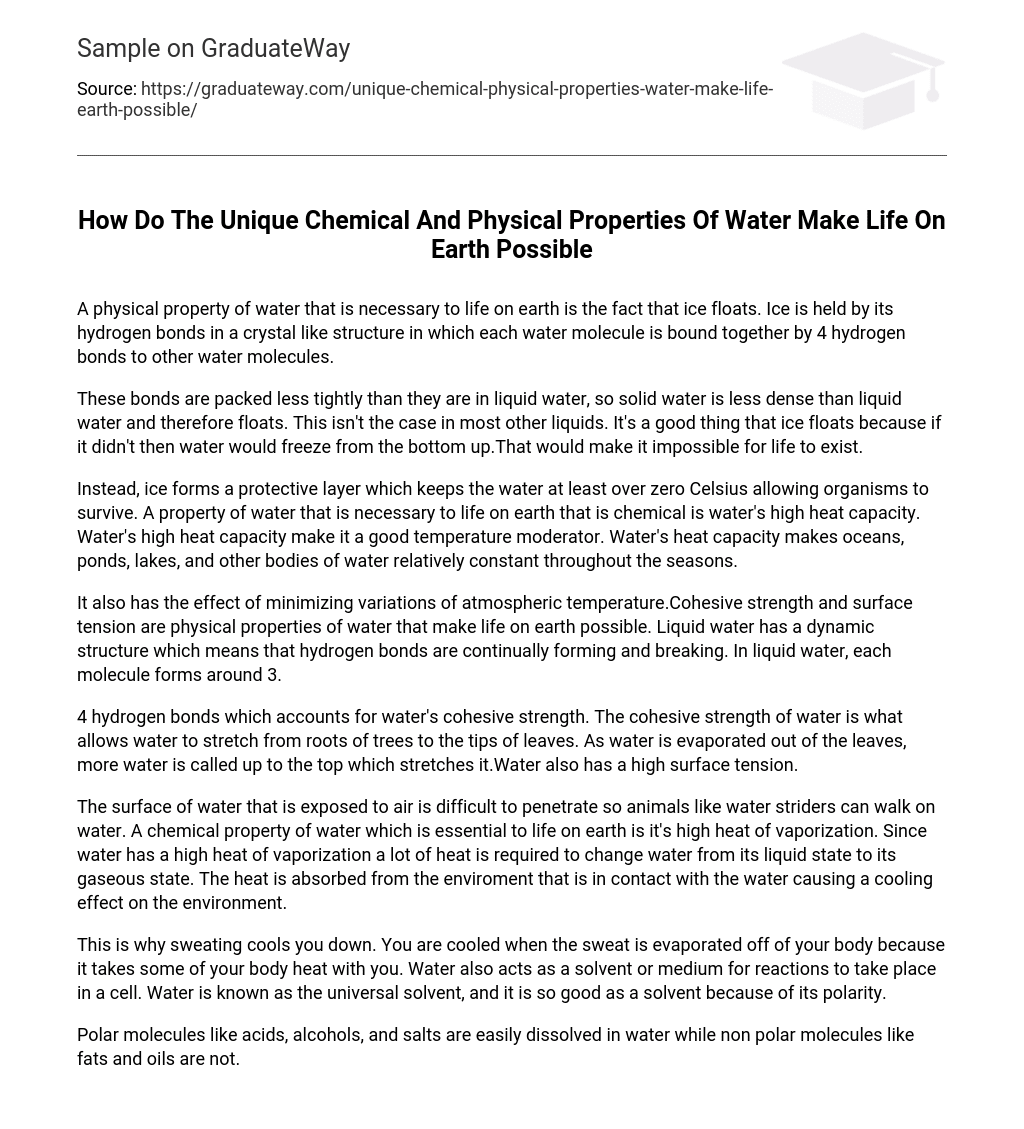One important quality of water that supports life on Earth is its unique ability to have floating ice. This occurs because when water freezes, hydrogen bonds form between water molecules, creating a crystalline structure. This structure allows each molecule to bond with four neighboring water molecules.
Compared to liquid water, solid water has bonds that are packed less tightly. This leads to lower density and buoyancy. The ability of ice to float is a crucial property because without it, water would freeze from the bottom up, making life impossible.
Despite its freezing nature, ice actually acts as a shield, maintaining the temperature of water above zero Celsius to support the survival of organisms. One crucial chemical characteristic of water crucial for life on earth is its high heat capacity. This attribute enables water to effectively regulate temperatures, ensuring that oceans, ponds, lakes, and other water bodies remain relatively stable throughout different seasons.
Minimizing variations of atmospheric temperature is another effect of water. It is thanks to water’s cohesive strength and surface tension, important physical properties that enable life on earth. Water’s structure is dynamic, with hydrogen bonds constantly forming and breaking. In liquid form, each molecule in water forms approximately 3.
Water has a cohesive strength due to the presence of 4 hydrogen bonds. This cohesive strength enables water to stretch from the roots of trees to the tips of leaves. When water evaporates from the leaves, more water is pulled up to the top, resulting in its stretching. Additionally, water exhibits high surface tension.
Water’s surface tension presents a hurdle for infiltration, but it also enables water striders to glide effortlessly atop it. An elemental quality crucial for sustaining life on our planet is water’s notable heat of vaporization. This signifies that a substantial amount of heat must be applied in order to convert water from its liquid state into a gaseous form. As water assimilates heat from its surroundings, it generates a refreshing cooling sensation.
Sweating helps cool the body by removing heat through evaporation. It also plays a crucial role as a solvent in cellular reactions and is known as the universal solvent due to its high polarity, which enhances its effectiveness.
Water has the capability to readily dissolve polar molecules such as acids, alcohols, and salts, while nonpolar molecules like fats and oils are not soluble in water.





